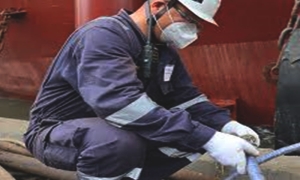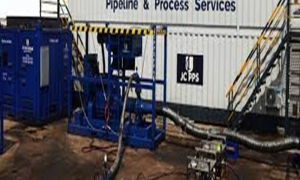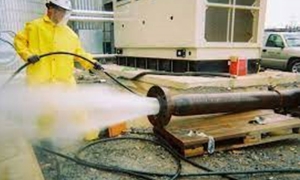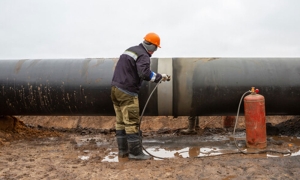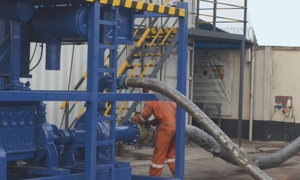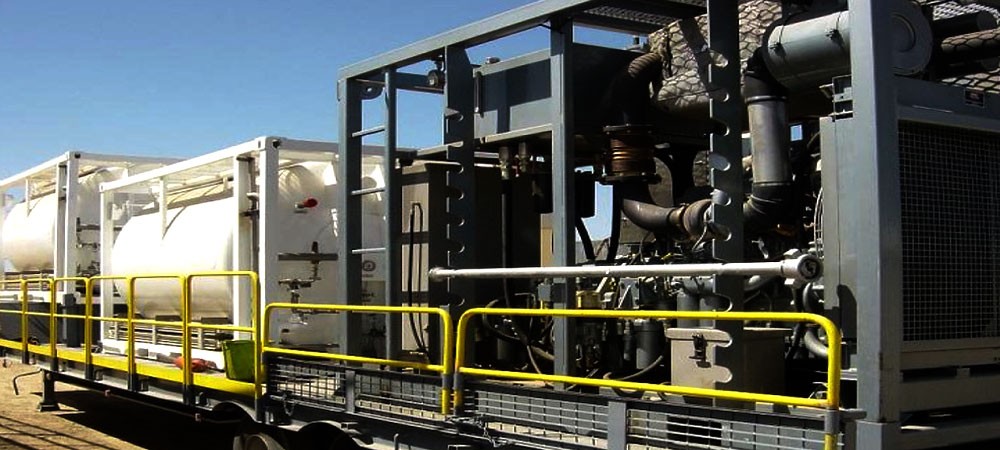Pipeline Cleaning & Flushing
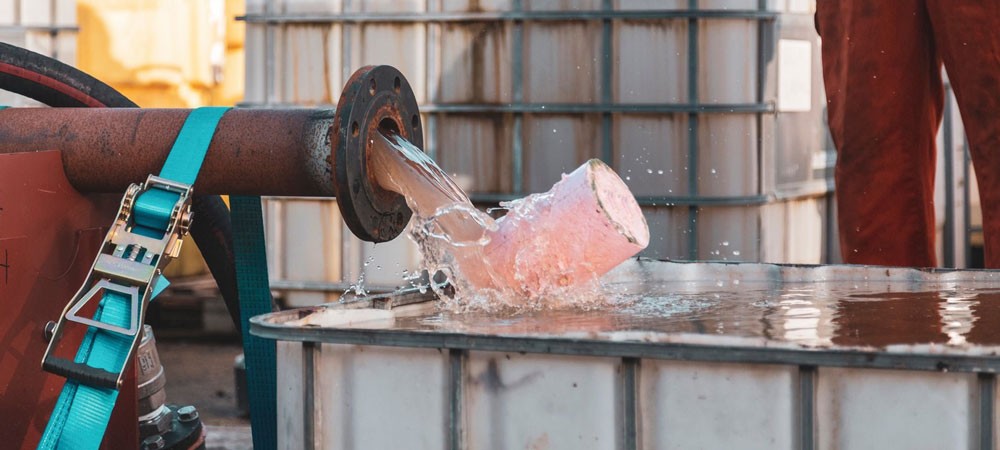
Pipeline Cleaning & Flushing
Pipe Flushing is a pre-commissioning activity. Piping and pipeline systems are flushed before commissioning the line or put into action. Pipeline or Pipe Flushing can be defined as the activity where enough fluid is pumped through the piping or pipeline section with sufficient velocity to forcibly remove construction debris, dust, rust, mill scale, oil, grease, or any other kind of impurities. The section of piping or pipeline system requiring flushing is defined beforehand and then a detailed pipe flushing plan is made for execution.
Pipe flushing is usually done for pipes with sizes 10 inches or less. For larger pipes, the fluid quantity requirement becomes so large that it slowly becomes impractical. So, full-bore pipe flushing is usually not done for pipes of size 12 inches or larger.
Types of Pipe Flushing
- Chemical/Water flushing and
- Oil flushing
Chemical flushing is the most common method used to remove garbage elements from the piping and pipeline systems using plain water and water with chemicals. On the other hand, oil flushing is carried out after chemical flushing to ensure the fluid that will flow through the pipelines are free from any kind of contamination. Oil flushing is used for lube oil systems.
Pipe flushing removes the unnecessary elements from the piping system by the force of flushing fluid which passes through the system at high velocity. The force applies to the foreign elements and becomes loose which then flows along with the flushing fluid making the pipe and pipeline surface clean.
So, the important factor for pipe flushing operation is the fluid velocity. The velocity is decided such that it achieves a Reynolds Number (NR) of 4000 for Piping and of 3000 for Tubing 1/2? and below, or the velocity must be equal to or more than the normal operating velocity of the actual fluid.
Like any other industrial equipment, pipelines require regular maintenance to maintain optimal functionality. With exposure to both internal and external conditions, pipelines can undergo corrosive damage leading to contaminant build-up, structural damage, and product contamination. Regularly scheduled cleaning activities can be used to prolong the useful lifespan of pipelines.
Maintaining industrial pipelines is critical to production operations for several reasons. To begin with, oil and gas pipelines are susceptible to wear over time, exposing them to moisture and chemical attacks. Unchecked oxidative processes will result in pipeline corrosion and the build-up of deposits within the pipeline channels. This will result in damage to the structural integrity as well as contamination of products being conveyed by the pipelines.
Regular pipeline cleaning will identify points of concern, eliminate build-up within the channels as well as inhibit negative oxidative reactions, and prolong pipeline durability. Perhaps more importantly, routine pipeline cleaning should be an integral part of the industrial safety checklist to ensure occupational health and safety risks to personnel are as minimal as possible.
2 Types of Pipeline Cleaning Methods
Outlined below are six effective pipeline cleaning techniques available to industrial pipeline operators:
- Mechanical pipeline cleaning methods
- Chemical pipeline clearance methods
The various ways to achieve mechanical and chemical cleaning for oil and gas pipelines are described in the subsequent sections of this article.
Mechanical Pipeline Cleaning
Mechanical clearance of build-up within gas channels is done using pipeline cleaning pigs Pipe-cleaning pigging systems come in various configurations, including gel and utility pigs.
Gel Pigs and Swabbing
Gel pigs are a popular choice for operators in moisture and debris removal, as well as pipeline dewatering and drying processes Gel pigs are designed for use in pipelines categorized as undiggable with difficult-to-navigate bends and poor/absent launch and retrieval hardware.
Additional benefits of using gel pigs include:
- Improved moisture absorption
- Reduced wear with longer pig lifespan
- Higher drive efficiency
- Greater handling and elimination of solid contaminants
- Dislodgment of other mechanical pigs stuck in pipeline channel
PIPELINE CLEANING & FLUSHING
Pipeline cleaning and flushing is an important aspect of cleanup and maintenance in any offshore or land operation.
There are a couple of primary types of pipe flushing you should be aware of:
- CHEMICAL FLUSHING:
Also known as pickling this process is performed to remove dirt, debris, grease, rust, oil, scale, and other substances that build on the pipelines. The process removes a thin layer of the surface of the pipe wall and all contamination. It also reduces the cost of oil flushing that may be performed later.
- OIL FLUSHING: This process is performed to ensure the pipelines and the operation oil are clean and contaminant-free. Oil flushing typically occurs after the chemical flushing process in lube oil or hydraulic systems.
In both cases, the flushing process involves loosening and removing particles of contaminants by forcing a fluid through the pipeline at a high velocity. Flushing must be accomplished at normal fluid velocities for a set period must with a certain level of filtration in the system, though in some cases there might also be requirements for certain fluid contamination levels.
There are a lot of compliance standards that exist with maintaining or decommissioning pipelines. A failure to properly clean or flush pipelines in offshore or land applications could result in a lack of compliance with these standards, Which opens a company up to potential fines or legal troubles.
Pipeline cleaning also decreases the risk of potential failure. Over time, the deterioration and corrosion of pipelines can make them significantly more likely to fail. In fact, some estimates indicate that as many as 65 percent of pipeline failures across the world are a result of corrosion.
Therefore, an increasing number of pipeline integrity laws have been put in the book. In the UNITED STATES, the pipeline integrity Bill exists to ensure pipelines are inspected for their integrity every five years if they are transporting liquid and every seven years if they are transporting natural gas.
Engaging in a regular pipeline cleaning and flushing regimen reduces the risk of leakage and failure, which prevents potentially catastrophic damage to natural environments and waterways as well as the loss of a massive dollar amount of liquid or gas.
There are a lot of regulatory requirements operators must comply with during the decommissioning. Local consultants are best, as they understand the regulatory requirements for the region.
One step is obtaining permits for decommissioning, which itself may take up to three years. Operators typically work with consultants to obtain all necessary permits before decommissioning. Local consultants are best, as they understand the regulatory requirements for the region.
Operators will also create an Execution Plan, which contains thorough environmental information and surveys of the project site. The plan contains instructions and information about decommissioning activities and when they will occur, as well as the equipment and personnel that will be needed for that process.
The operator may need to work with various federal agencies in ensuring their regulatory compliance and obtaining permits. Again, it is crucial to give paperwork with these agencies more than enough time to process, which is one reason why the decommissioning prep work begins years in advance.
Finally, there are some physical elements of preparation that must occur before decommissioning work can begin.
Teams must flush and clean all tanks, processing equipment, and piping, and dispose of any existing residual hydrocarbons. Equipment on the platform must be moved, which may involve cutting pipes and cables, separating deck modules, installing lifts, and performing structural reinforcement.
Teams may need to work underwater as well to remove marine growth on the structure before decommissioning can proceed.
Flushing pipelines and pipe systems with a liquid to remove the loose contamination is called flushing. Any liquid can be used for rinsing, but water is often used for safety reasons. The result strongly depends on the pipe configuration and customer requirements. A turbulent cleaning flow will provide a better cleaning effect than a laminar flow. The cleaning result can be checked afterward in various ways (e.g. visually). If you do not have or do not want to use your own product pumps to perform the flushing activities, EMBARK can organize mobile water pumps for you to reach the desirable flows.
